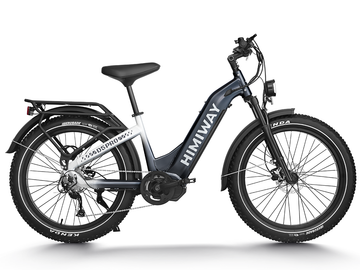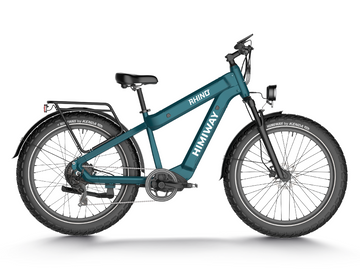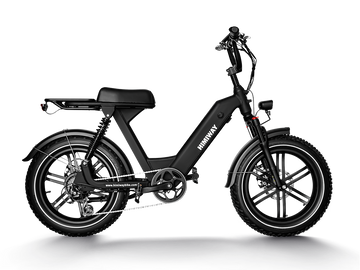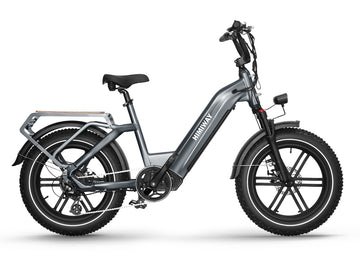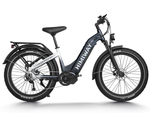It’s no secret that e-bike popularity is growing all around the world. Men, women, and children of all ages are discovering the benefits of e-bike ownership. Even the COVID-19 pandemic caused a surge in interest for alternative and private modes of transportation such as e-bikes. Exposure to public areas such as bus stops and train stations, the risks of ridesharing, and difficulties transportation companies have finding workers are among the many reasons that many people are turning to electric bikes as a temporary or permanent solution for their mobility needs.
Today we will cover the e-bike market overview, trends, and challenges shaping the e-bike industry. We will examine recent history, current market data, and future predictions for electric bikes. It is an exciting time to be a member of the e-bike community. Let’s dive in!
Market Overview
The electric bike market is composed of suppliers, manufacturers, brands, sellers, and riders. These groups are all connected by supply and demand. Riders must be willing to pay the price that the sellers charge, but sellers can only charge what the riders will pay. Suppliers and manufacturers play a similar game. Brands are somewhere in the middle as they can influence demand by having prestige to their name (and many manufacturers have their own brands so they can control the quality of their product).
All these groups have come together with a desire to achieve a cleaner and more sustainable environment which has resulted in tremendous popularity and a surge in demand for e-bikes. Other market drivers include heavy traffic congestion in major cities, new regulations, and tax credits for electric bikes, as well as an increased focus by consumers on personal health and experiencing the great outdoors.
Based on all these players and factors, the e-bike industry is currently valued at just under 24 billion dollars. Most of that valuation comes from Europe and Asia-Pacific. The European region is mostly dominated by Germany, France, and Italy while the Asia-Pacific region sees most of its growth from China. In terms of different brands, the e-bike market is relatively fragmented, although a few major companies are focusing on electric bikes in addition to traditional bikes. Brands like Himiway focus exclusively on electric bikes and are therefore able to dedicate all their time to improving and innovating on e-bike quality and functionality compared to brands that operate across multiple product segments.
Market Trends
Estimates differ, but according to one market research source, the e-bike industry is expected to grow to 70 billion dollars by the end of 2027. In a slightly more conservative piece, the e-bike market is expected to reach 50 billion dollars by 2026. The market will potentially grow by 12% compounded annually over the next 5 years. No matter which estimates one uses, the future is bright for e-bikes.
These studies focused on throttle assist and pedal-assist e-bikes used for city travel as well as mountain biking and clearly show that the trend is only going up. In addition, the region with the highest growth is expected to be Europe while the region with the largest market share today is Asia-Pacific.
One new development that could pull forward the trend for e-bike ownership is the passing of two proposed bills in the U.S. Senate and House of Representatives called the E-BIKE ACT, which would allow for a refundable tax credit of 30% off the cost of a qualified electric bicycle. This law, if passed, would increase the demand for e-bikes in the United States greatly. It would be a huge benefit to the e-bike community overall.
Challenges
Although the demand is increasing around the world, e-bike challenges remain for the biggest brands to solve in 2021. For one, high prices continue to be a barrier for many people when compared to the lower price of some traditional bikes. It should be noted that depending on the usage of the e-bike, the total cost of ownership may be quite low, especially if the e-bike is used instead of or in addition to a gas-powered vehicle.
Over time, it is possible prices will come down, but in the near future, logistical challenges and supplier material shortages will keep prices elevated. Supply chains all around the world have been thrown into disarray thanks to the dizzying speed that consumer demand bounced back after vaccines became available around the world.
Awareness of e-bikes, in general, is another challenge. Not everyone knows about the benefits of e-bikes and their ease of use especially for seniors or those recovering from injuries. The option to use the battery power in addition to pedaling has opened biking to a huge population that otherwise may not have felt comfortable journeying far on a bike. Especially in North America, there are plenty of people that still do not know much about electric bikes.
Lastly, new entrants with sub-par quality products may damage the reputation of more prestigious brands as well. Brands that don’t use high-quality batteries or motors, or have short-range may diminish the e-bike experience.
Predictions for the E-bike Industry
We may see an increase in moped-style electric bikes with fat tires like the Himiway Escape due to their comfortable ride and more maneuverable body thanks to the smaller tires. Anyone that lives in a city may appreciate the ability to store these types of bikes more easily than bikes with larger fat tires. The tradeoff one makes with smaller tires is a loss of some efficiency so full-sized 26inch fat tires are sure to remain popular as well.
Another unfortunate prediction is that some sources have noted it is unlikely that battery technology will change very much in 2021 or 2022. Another big breakthrough in battery tech may still be 5-10 years out. Finally, due to e-bike popularity and strong market trends, it is almost guaranteed that more bike brands will join the market, but the established makers will likely continue to put out new and improved products.
We are certainly excited to see what the future has in store for the world of electric bikes. Based on current data and market trends, it is sure to be a wild ride!





